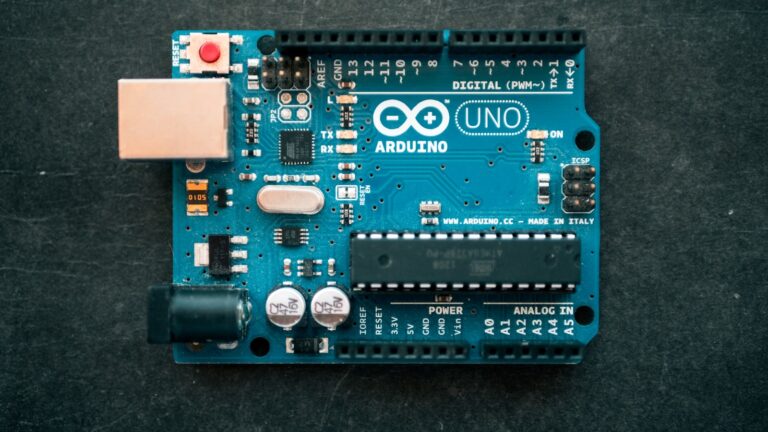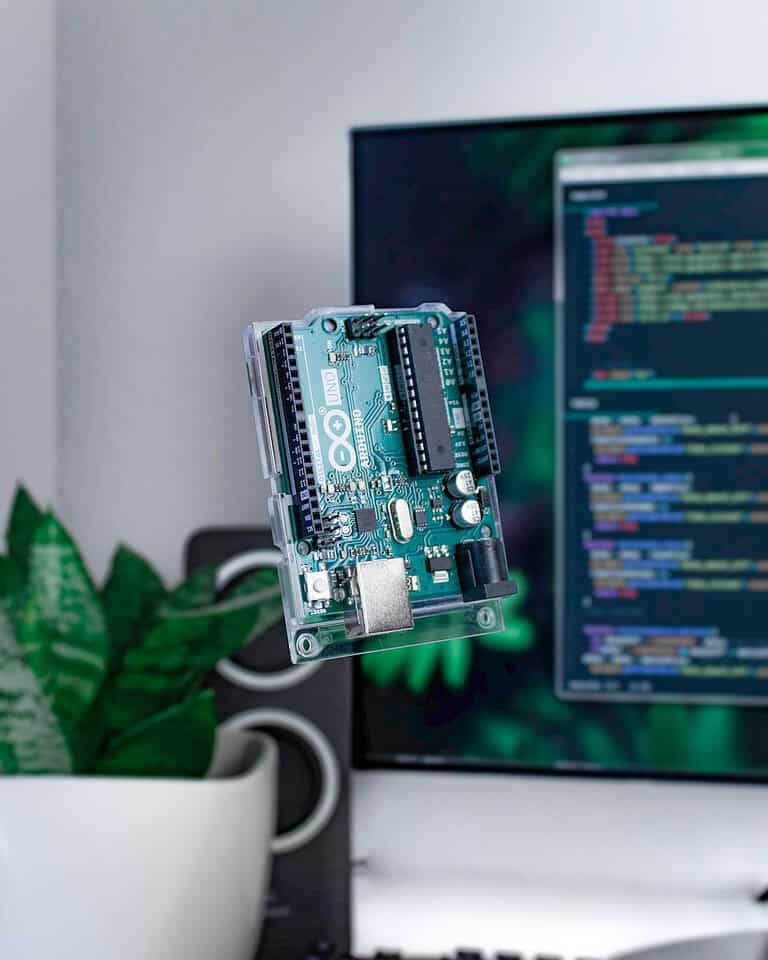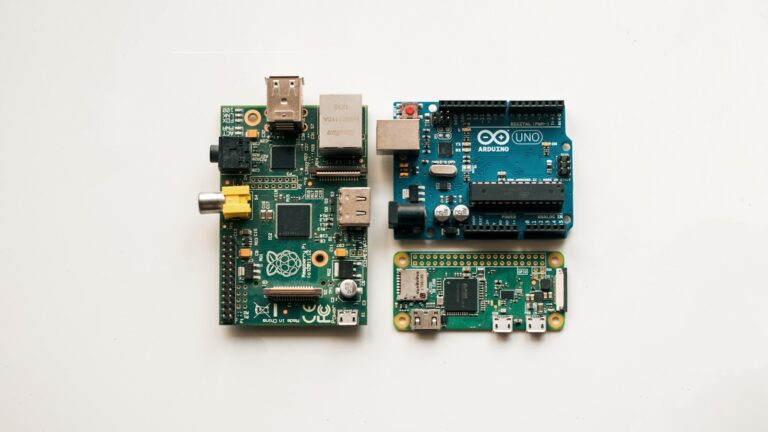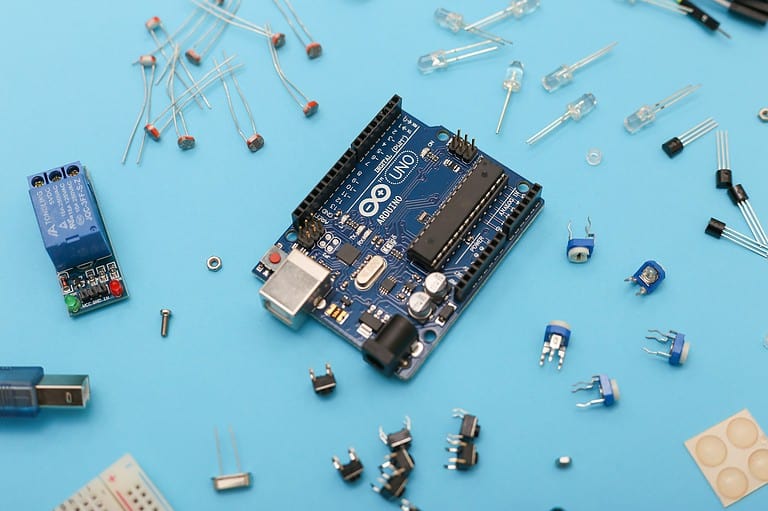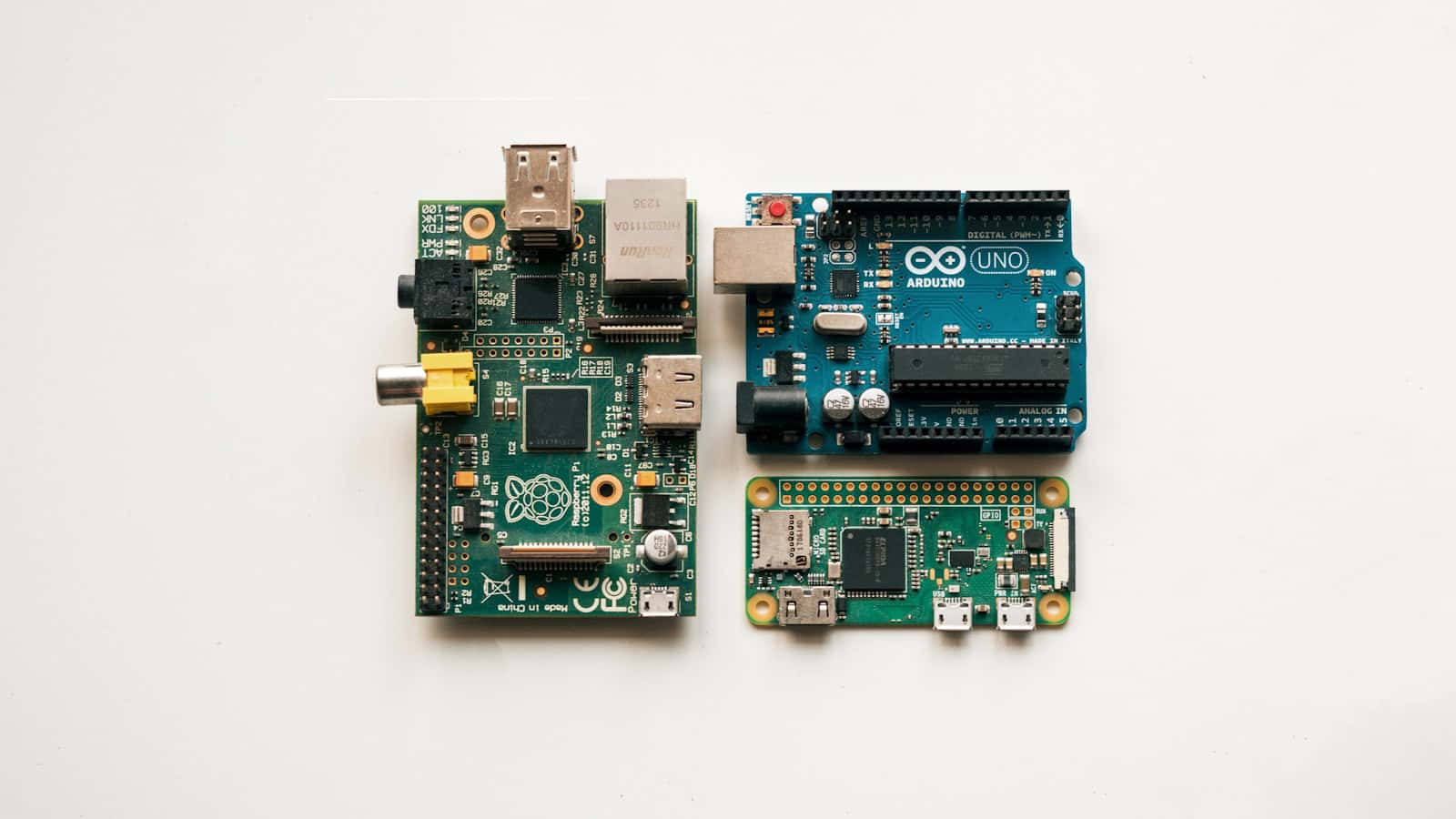
Technology enthusiasts often find Arduino a compelling platform to explore advanced IoT projects. With Arduino, building sophisticated IoT devices is both accessible and challenging for hobbyists and professionals alike. Advanced Arduino IoT projects empower creators to control and automate devices in novel ways. This includes everything from smartphone-controlled electric skateboards to intelligent lighting systems.
Making innovative IoT devices with Arduino typically involves combining sensors, microcontrollers, and connectivity modules. These projects push the boundaries of what’s possible with a small, affordable microcontroller. Creations like UV meter keychains and wirelessly controlled servo motors showcase the versatility and practicality of Arduino in everyday life.
Exploring these advanced projects not only provides a deeper understanding of IoT but also offers practical solutions to real-world problems. Enthusiasts can find step-by-step guides and inspiration online to build projects that simplify their lives and showcase their technical skills.
Building the Future with Arduino: Advanced IoT Projects
Environmental Monitoring and Control System
Create a network of Arduino-powered sensors to monitor air quality, temperature, humidity, and other parameters in real-time. Use the data to control smart devices like fans, air purifiers, or even plant watering systems. This project can be scaled for home automation, agricultural applications, or industrial settings.
Smart Home Security System
Design an intelligent security system with Arduino and various sensors like motion detectors, door/window sensors, and cameras. Integrate the system with cloud services for remote monitoring and alerts, facial recognition, and even voice commands.
Industrial Automation and Monitoring
Utilize Arduino boards to create custom solutions for industrial automation and monitoring. Monitor production lines, track inventory, control machinery, and gather data for analysis. The flexibility of Arduino allows for tailored solutions to fit specific industrial needs.
Wearable Health Monitoring Device
Build a wearable device with Arduino to track vital signs like heart rate, blood oxygen levels, and body temperature. Connect the device to a smartphone app for data visualization and analysis. This project has the potential to enhance personal health monitoring and contribute to medical research.
Autonomous Drone Navigation
Combine Arduino with GPS, inertial measurement units (IMUs), and other sensors to develop autonomous navigation systems for drones. Implement obstacle avoidance algorithms, path planning, and intelligent decision-making capabilities. This project can revolutionize drone applications in various industries like agriculture, logistics, and surveillance.
Smart Agriculture Solutions
Develop Arduino-based systems to optimize agricultural practices. Monitor soil moisture and nutrient levels, control irrigation systems, and automate greenhouse environments. These solutions can improve crop yields, conserve resources, and reduce labor costs.
Open-Source DIY Projects
Explore a wide range of open-source DIY projects powered by Arduino. Build weather stations, smart mirrors, home automation gadgets, and even musical instruments. Contribute to the Arduino community by sharing your projects and collaborating with others.
The Power of Arduino IoT
Arduino provides a versatile and accessible platform for building advanced IoT projects. With its extensive libraries, modules, and community support, the possibilities are endless. By embracing Arduino and the IoT, you can create innovative solutions that have a real impact on the world.
Key Takeaways
- Advanced Arduino IoT projects allow control and automation of devices.
- Combining sensors and microcontrollers creates versatile IoT solutions.
- Online resources provide guidance for building practical Arduino projects.
Building IoT Devices with Arduino
Building IoT devices with Arduino involves using microcontrollers and essential communication protocols. It includes integrating sensors and actuators, handling real-time data, and managing energy effectively.
Understanding Arduino and Microcontrollers
Arduino is a popular platform based on microcontrollers like the Arduino Uno and ESP32. Microcontrollers are small computers on a single integrated circuit containing a processor core, memory, and programmable inputs and outputs. Engineers use them to control electrical components and devices. By programming these microcontrollers, users can automate tasks, process sensor data, and drive actuators in their projects.
Essential IoT Communication Protocols
IoT projects require various communication protocols. Wi-Fi and Bluetooth are widely used for short-range communication. For longer ranges and more robust connections, protocols like MQTT and HTTPS are preferred. These protocols enable microcontrollers to send and receive data efficiently. Serial communication and I2C are also important for communicating between sensors and the Arduino.
Integrating Sensors and Actuators
Integrating sensors and actuators allows IoT devices to interact with their environment. Common sensors include temperature sensors (e.g., DS18B20), humidity sensors (e.g., DHT11), proximity sensors, and air quality sensors. Actuators such as servo motors, LEDs, and relays enable devices to perform actions. Arduino programming involves writing code to read data from sensors and trigger actuators based on predefined conditions.
Real-Time Data Handling
Handling real-time data is crucial for IoT applications. Devices often use sensors to gather data continuously, such as temperature and humidity levels. This data must be processed and transmitted quickly. The Arduino can send data to a web server or display it on an OLED or LCD display. Blynk and other platforms can further help manage and visualize real-time data.
Advanced Connectivity Solutions
Advanced connectivity solutions improve device functionality. ESP32 and NodeMCU are popular for their built-in Wi-Fi and Bluetooth capabilities. They support direct connections to the internet, enabling web servers and API integrations. HC05 Bluetooth modules offer wireless communication, while ESP8266 provides Wi-Fi support for smaller projects.
Energy Management
Efficient energy management is vital for battery-powered IoT devices. Reducing power consumption by optimizing sensor and actuator use is important. PWM (Pulse Width Modulation) and ADC (Analog to Digital Conversion) strategies can help. Devices may switch to low-power modes between operations. Continuous monitoring of battery levels ensures reliable operation over time.
Design and Development Tools
Several design and development tools assist in building IoT devices. PCB design software like Eagle and KiCad helps in creating custom circuit boards. Arduino IDE and PlatformIO are widely used for programming. Sample projects on GitHub provide reusable code and circuitry references. MicroPython and Blynk expand development options for those looking for more advanced features.
Innovative Arduino Project Examples
Innovative Arduino projects take advantage of microcontroller capabilities and IoT connectivity. They can range from making automated home systems to smart wearable devices and efficient public utilities.
Home Automation Systems
Home automation with Arduino integrates IoT sensors and actuators to control various home devices remotely. Using NodeMCU and ESP32, enthusiasts can build Wi-Fi-enabled smart lights and door locks. The Blynk app provides a user-friendly interface to manage these devices. Components like the HC05 Bluetooth module enable communication between devices. Projects often involve the use of components like DHT11 for climate monitoring or RGB LEDs for ambient lighting.
Interactive Robotics Projects
Interactive robotics involves designing and programming robots to interact with their environment. A popular project is building a robotic arm that can perform tasks with high precision. Using Arduino microcontrollers, servo motors, and sensors like HC-SR04, these robots can follow commands and avoid obstacles. Robotics enthusiasts often utilize Arduino with Raspberry Pi for advanced functionalities, with the Pi handling complex computations and Arduino managing motor control. GPIO interfacing is common in these builds.
Environmental Monitoring Devices
Arduino-based environmental monitors collect and transmit data about air quality, temperature, and humidity. Using sensors like DHT11 for temperature and humidity, and gas detectors for pollutants, these projects help track environmental conditions in real-time. Data logging is managed through APIs, often displayed on OLED or LCD screens. Wi-Fi connectivity provided by ESP32 ensures remote monitoring. These devices can even be configured to send alerts to mobile apps when certain thresholds are crossed.
Health and Lifestyle Gadgets
In health tech, Arduino powers wearables that monitor vital signs. Projects like heart rate monitors use pulse sensors, while fitness trackers employ accelerometers to measure activity levels. Body temperature sensors and Bluetooth modules like HC05 facilitate data transfer to smartphones for analysis. Arduino’s low power consumption makes it ideal for portable devices. Advanced projects integrate multiple sensors and display data on small OLED screens, ensuring user-friendly interfaces.
Public Infrastructure Utilities
Arduino is instrumental in enhancing public utilities like street lighting and traffic systems. Smart traffic lights use Arduino to control LED lights based on real-time traffic data, collected by sensors such as ultrasonic HC-SR04. Public address systems can be automated using Arduino for scheduled announcements. Street lights equipped with light-sensitive sensors can adjust brightness to save power. Implementing such systems improves energy efficiency and urban mobility.
Agricultural and Industrial Automation
In agriculture, Arduino facilitates efficient farming practices through automation. Soil moisture sensors and automated irrigation systems ensure optimal water usage, improving crop yield. Industrial automation projects use Arduino to control machinery and manage processes. PWM and ADC functionalities allow precise control over motors and actuators. Real-time monitoring of environmental conditions is achieved with sensors interfaced through serial communication. These projects can significantly reduce manual labor and increase productivity in various industries.
Frequently Asked Questions
This section addresses common questions about integrating sensors and essential components, suitable communication protocols, security practices, data management, and power consumption in advanced Arduino IoT projects.
How can one integrate sensors into advanced Arduino IoT projects?
Sensors can be connected to Arduino boards through analog and digital pins. Specific libraries may be necessary to decode sensor data. Whether using temperature, humidity, or motion sensors, selecting the right sensors and understanding their data output is crucial.
What are the essential components for creating an advanced IoT project using Arduino?
Essential components include an Arduino board, sensors, actuators, communication modules like Wi-Fi or Bluetooth, and power sources. To enhance functionality, consider adding external memory, real-time clocks, or shield modules for better connectivity and storage options.
Which communication protocols are recommended for advanced Arduino IoT projects?
For advanced projects, communication protocols such as MQTT, HTTP, and WebSocket are recommended. These protocols facilitate efficient data transfer and real-time communication between devices and servers. Choosing the right protocol depends on the project’s requirements.
What are some security best practices for building IoT projects with Arduino?
Security practices include using strong authentication methods, data encryption, and regular firmware updates. Additionally, implementing secure boot processes and monitoring network traffic can prevent unauthorized access and data breaches, ensuring the integrity of the IoT system.
How is data managed and analyzed in complex Arduino IoT systems?
Data is typically managed using cloud services or local servers. Data logging, storage, and real-time analysis are achieved through platforms like AWS IoT, Google Cloud, and ThingSpeak. Choosing a reliable platform helps in handling large datasets and provides tools for data analytics.
What are the power consumption considerations for advanced IoT projects using Arduino?
Power consumption can be minimized using low-power techniques such as sleep modes and selecting components with lower energy footprints. Battery life can be extended by optimizing code efficiency and reducing sensor reading frequencies, which is essential for remote or battery-powered projects.

